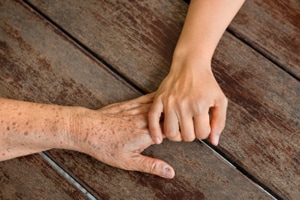|
While these are not sports related injuries, Dr. Joyce specializes in endoscopic carpal tunnel repair because of his general orthopaedic residency training at Barnes Jewish Hospital. Dr. Joyce had the privilege to become skilled at carpal tunnel repair, ligament reconstruction, trigger finger release and wrist arthroscopy with the late Dr. Paul Manske, a nationally renowned hand, tendon and wrist surgeon and Editor of the Journal of Hand Surgery.
Carpal Tunnel Syndrome occurs when the tissues surrounding the flexor tendons in the wrist swell and put pressure on the median nerve. The swelling of these tissues narrow the confined space of the carpal tunnel and, over time, crowds the nerve. The most common symptoms include numbness, tingling, and pain in the hand, an electric shock-like feeling mostly in the thumb, index, and long fingers, and strange sensations and pain traveling up the arm toward the shoulder. Symptoms usually begin gradually, without a specific injury. When surgery is required, an endoscopic method may be performed. Dr. Joyce will make a smaller incision and use a small camera, called an endoscope, to cut the ligament from inside of the carpal tunnel.
Trigger finger is a condition that affects the tendons in the fingers or thumb. It limits finger movement and the tendon becomes momentarily stuck at the mouth of the tendon sheath tunnel when you try to straighten your finger. You might feel a pop as the tendon slips through the tight area and your finger will suddenly shoot straight out. Stiffness and catching tend to be worse after inactivity, such as right after waking up in the morning. If the symptoms are severe and your physician recommends surgery, the goal of the procedure is to widen the opening of the tunnel so that the tendon can slide more easily. Most patients are given an injection of local anesthesia to numb the hand for the procedure, and are able to move their fingers immediately after surgery.
|

